The Dodge Dakota is a capable and dependable pickup. Comparing three different “generations”: a ’93, a ’04, and this ’06. It is the only vehicle in its class to include a V-8 engine and has the class’s largest towing capability. It drives well, provides a smooth ride, and because I have the Crew Cab, it easily accommodates four people (seat belts for 6). They don’t get great gas mileage attributed to the V-8 engine, and they rust easily in the Northeast. It’s an excellent truck for work, and I put a lot of miles on it due to my profession. It’s straightforward to work on, and replacement components are reasonably priced.
However, the 2006 model has also demonstrated electrical and computer problems. Your 2006 Dodge Dakota PCM may also be damaged by other factors, including liquid leaks, poor shifts, failed self-diagnostic cycle, and a Rough running Engine. Some of the common PCM problems reported by users include:
Oil Leaks
According to the 2006 Dodge Dakota owners, oil leaks are the most common problem for this year’s model. You’ll notice an oil puddle or spots under your Dakota as the most visible sign of an oil leak. To leak in either the transmission fluid or the power steering fluid. Inspect each one of them. If the power steering fluid appears low or frothy, you may be dealing with a leak in the system. The red fluid on the garage floor may be transmission fluid, which is nearly always red. When oil leaks from the right place, it might get on the exhaust manifolds and cause a smoky engine compartment. In comparison to transmission fluid, it’s not nearly as explosive. It usually just produces a lot of fumes and a foul odor.
To solve the oil loss problem in your Dodge Dakota’s engine, you first need to know where and how it is occurring. The repair of the oil leak should be a top strategic goal. There can be issues with long-term leaking of oil. Your oil supply could run out before you realize it because of the leak
2006 Dodge Dakota PCM and Engine Problems
A wide range of factors can cause engine banging in a Dodge Dakota. These include problems with the spark plugs, faulty or incorrect gasoline, carbon deposits, and other concerns. A loud engine noise while driving might quickly lead to a blown engine. It isn’t easy to pinpoint the exact source of engine knocking. This complicates diagnosis. Below are several typical problems that could cause the knocking sound to occur on your Dakota.
• Oil/Viscosity Flow
If your Dakota is running dangerously low on oil, it may begin to stutter and vibrate. You can hear the engine sputtering and grinding to a halt right before your eyes. It may squeal if the oil is too thin or old to lubricate the engine adequately. A failure of the head gasket can cause rapid thinning if coolant leaks into the crankcase. The following are signs that your Dodge Dakota’s head gasket is failing.
• The buildup of Carbon Dioxide
Combustion generates carbon as a byproduct. Carbon deposits can build up in your Dakota’s combustion chamber as the engine ages. Increasing the effective compression ratio of the combustion chamber due to carbon accumulation can be pretty dangerous. When this happens, the engine will stutter. The additives in today’s gasoline remove these sludges as you drive. Nevertheless, it has been observed to occur.
• Bad Fuel
In rare cases, using the wrong gas might generate a knocking or pinging sound. A fuel’s octane rating describes how much compression the energy can withstand before starting to burn. A vehicle’s octane rating is essential. Your engine was built to run on Dodge-approved power.
Camshaft Sensor Problem
The 3.7L and 4.7L car engines have a common problem with cam sensor failure. In this case, the engine cranks but does not start. Even while driving, it can stall as a result of this. As long as the cam sensor is the problem, owners say they can usually get the vehicle started within 5 to 20 minutes. The engine light may also come on. To fix a malfunctioning cam sensor, you’ll need a new one. According to some owners, aftermarket sensors don’t work as effectively in Dodge vehicles.

Blown Bolts on Exhaust Manifold
Broken exhaust manifold nuts are another prevalent 2006 Dodge Dakota issue. The exhaust manifold might become quite heated if you routinely haul heavyweights. Bolts can shatter due to repeated heating and cooling.
Carbon deposits can be left behind as a result of this. Allowing oxygen into the exhaust system can cause your O2 sensor to indicate that the engine is running too lean. Poor gas mileage, harsh running, and even damage to the catalytic converter are consequences of this blunder. Read more on NHTSA
Conclusion
The 2006 Dodge Dakota PCM issues are extensive, and many of them can be fixed by taking the car to a mechanic. Checking fluid levels before any significant errands can help prevent substantial damage in the future, rather than dealing with minor annoyances such as hard gear shifts during the initial drive time until something is correctly addressed before the vehicle is driven.
Always do your research before attempting any repairs, especially if they are more complicated than the majority of them. Concerning shifting gears, for example, adding new fluid may be all
That is needed, as it will allow for better handling while driving after allowing space between moving parts in the system for smoother operation.
However, it is necessary to have your car inspected initially, and regular maintenance is also recommended to avoid transmission difficulties. As a result, consider the numerous options that will bring you to the solution.
2006 Dodge Dakota PCM FAQs
It’s possible that driving a car with a defective PCM will cause more harm than good. You can tell whether your car’s PCM is malfunctioning by a failed emissions test or the presence of foul-smelling exhaust gas. The dashboard error lights will come on if the PCM isn’t working correctly.
To reset my PCM, follow the simple steps below
With the ignition key removed.
The negative battery cable should be disconnected at this time.
Turn the ignition key as if you were trying to start the vehicle.
Let it sit for 10 to 15 minutes before releasing the key and turning it off.
Take out the ignition key.
The most common symptoms of a lousy PCM are:
1 Check Engine Light comes on
2 Engine stalling or misfiring
3 Reduced engine performance
4 Difficulty in starting the car
How do you test a 2006 dodge Dakota PCM
The PCM (Powertrain Control Module) of a Dodge is the brain of the diagnostic system. The PCM monitor’s sensor data and engine performance. The PCM produces a code as soon as an engine or fueling system component fails and marks the issue as either “trouble” or “pending.” Your Dodge’s diagnostic system would no longer be reliable if the PCM could not operate correctly. It only takes a few minutes to test out this handy gadget.
Before you inspect your 06 Dodge Dakota PCM, gather some essentials. See your OBD-II scanner’s manual for a list of available fault codes. Find and print Chrysler’s additional OBD-II codes online. Mark all PCM-related fault codes with a highlighter on both. P0601, for example, indicates a PCM failure. Keep an eye out for it while testing the system.
Stack the coding resources in your Dodge’s console. Then take control of the car.
Locate the computer outlet in your Dodge. The data link connector placement varies per Dodge year and model. It is either beneath the steering wheel or above the gas pedal.
Auxiliary OBD-II scanner for Dodge. Then start the Dodge’s electrical system. Your OBD-II scanner may also need the engine running. Not all scanners are created equal.
5: Examine your device’s screen. The scanner is not set up to automatically retrieve codes if there are none. Find the “Code scan” command entry procedure. It’s usually a button press.
Scrutinize the scanner’s display screen for barcodes. The PCM is a powertrain component. OBD-II codes beginning with B, C, or U can be safely excluded. Look up codes related to the PCM’s actions in the source material you previously placed in the navigator’s seat.






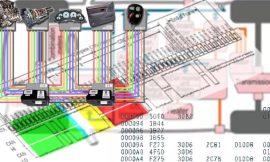
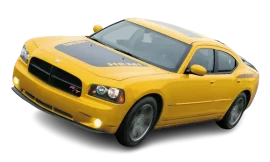
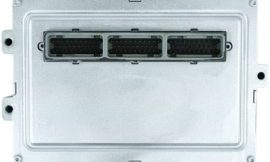




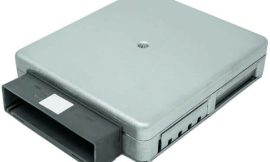


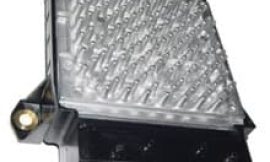


Questions rather than a comment: have an 06 dakota quad cab 4×4 4.7L. Cam positiom sensor replaced with carquest unit in early may 2020. Works fine. Minor oil leak at front of engine close to crank pulley, i regularly check and/or change oil, run penzoil platinum high mileage 5w30 with a puraltor boss filter on the 4.7L. Pcm replaced in july 2020 by local dodge dealer for failure. In aug, 2022, pcm failure again. Did not have money for dealer again, replaced it myself (new unit purchased from car computer exchange with lifetime warranty). Disconnected battery terminals, both sides, while letting sit for 90mins for static charge to dissipate, i removed air cleaner housing to access pcm. Dodge dealers tech had installed ONE of the three pcm bolts, pcm was slapping against mount every time i hit a bump because of this, but did not know beforehand. Dealers service manager declined responsibility, and informed that i only had a one year warranty anyway. Received 2 new bolts for pcm from dealer free of charge. Jan 2023, pcm issues begin to arise again, these same following issues are the issues i have every time the pcm goes out:
To be specific: sometimes have to crank engine approx. 7 seconds to start, tho not often, transmission shifting issues, if i dont let engine idle down after start-up the trans will engage roughly, will try to take off from stop in what seems to be 3rd gear, transmission will not downshift when applying accelerator, mileage drops, engine will occasionally stumble a little, check engine light on, sometimes will not talk to obd-ii handheld scanner, transmission temp warning will illuminate ocassionally requiring shut-down, and restart of engine after 30sec wait with ignition off. In addition, the warmer the weather, the more she misbehaves. The cooler the weather, the more likey she is to run and drive like normal. As far as i know, the engine and transmission themselves are fine. Barring pcm issues, both operate and behave perfectly normal.
I am currently recovering from a broken right hand, and it will be a few more weeks before i can begin further diagnostics, but id like to gather as much info as possible in the meantime. Is there anything else you can tell me about the pcm issues this year is known for? Id like to try and figure out what is causing this vehicle to eat pcms like tic-tacs, as this just cannot continue. I worked on cars professionally for nearly 17 years in total, but not since 2012. Am now in auto parts as an asst mngr. I am completely stumped tho. I have not found any obvious signs of wiring damage, the exhaust manifolds and bolts are in good shape, no transmission leaks, no power steering leaks.
I will be double checking the ignition system components when my hand has healed, along with once again checking the wiring around the engine, transmission, and pcm- when the pcm is intact, there are no engine codes.
Any suggestions, thoughts, or other facts regarding this issue would be most appreciated. Thank you.
Just curious if you ever found out what the cause of this may be because my Dakota is doing the same very exact symptoms that you just described so it’s kind of curious if you come to a conclusion on that because I also am having hell…. thank you
Mine is doing all the same things and it’s been driving me crazy. Ive had three different computers, from all computer and some other shady company. I think the problem is the pcms are all remanufactured. I took my 06 to the dealer almost around the same time as you in 2020 and they told me they could not get me the part because it is no longer being made since this truck line is discontinued. It’s definitely the PCM, I think it’s just a matter of finding one that works correctly. Let me know what you guys think because I’ve been dealing with this for years and I’ve dumped close to 20 grand into this hunk of crap.